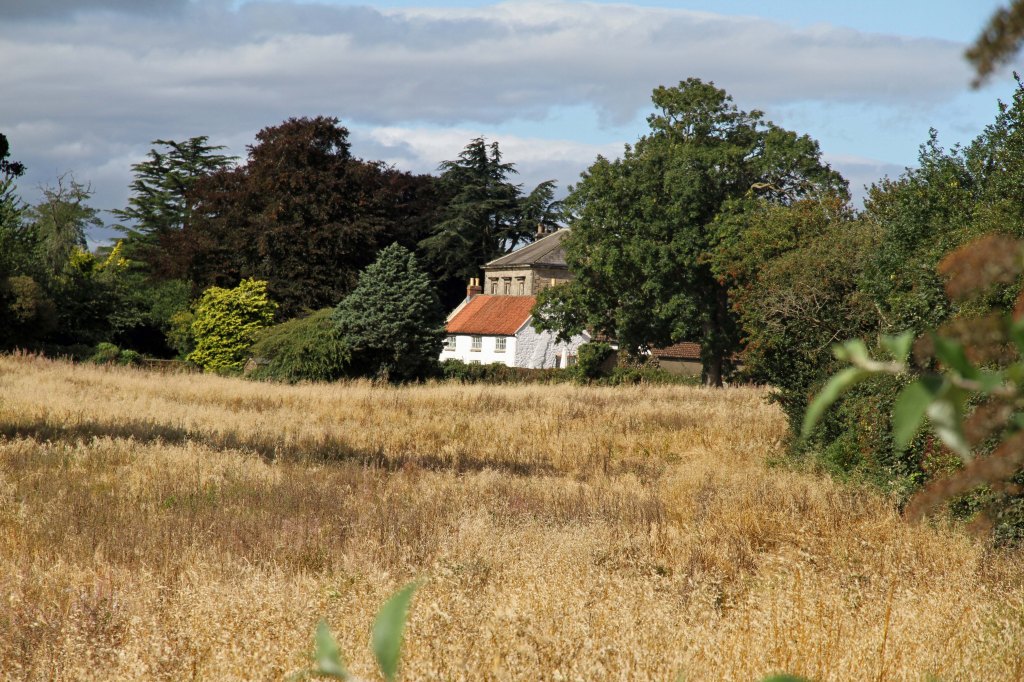This month I have been transcribing Wills for Brompton on Swale and have picked out just a few details to give a picture of the history Brompton and highlight how interconnected villages and people were in the wider dales.

Thomas Morland’s Will of 1549 is the first Will to survive, (one of eleven from the 16th century). His farm was rented from King Edward for 32s 2d a year, his servant Michael Clarke’s annual wage was 20s. The Inventory lists all his farm stock as well as household goods and debts. Like most farms in the lower dales it was a mixed farm with livestock as well as six acres of hard corn sown and three oxen to plough the land. His childhood home was probably either Bolton or Ellerton on Swale because he wanted to be buried “in ye churche erthe of all Hallowes at Bowlton of Swalle.” I wonder why Bolton church was then “All Hallowes” as it is now dedicated to St Mary?
In 1557 Thomas Walker gave the farm to his wife Alison hoping that she could bring up their young children its profits, but because she was blind he asked his brother Robert Walker and friend Henry Carter to help her until his son John was old enough to take over.
The Scropes of Bolton Castle in Wensleydale held a considerable amount of land in the area and Thomas Smithson of Gatherley rented two farms from Lord Scrope when he died in 1573.
John Fawcett, a tailor who died in 1604, wanted to be buried at Catterick rather than Easby. Like many tradesmen he also had a farm with three kyne, (cows) two calves and a crop of corn. John Ramshey in 1611 had an income from rents of cottages in Ellerton on Swale. As well as other stock on his farm he had two swarms of bees. Lancelot Raw in 1629 was a weaver, he gave his son Peter his new loom and half of his woollen loom & a third part of his working gear. Richard Broad, another weaver, in 1671 had three looms and Richard Carter in 1680 was also a weaver.
William Garth in 1618 had White House farm but his business interests were much wider. He also had a farm in Arkengarthdale called Sullayhowme, and a fourth part of Skeeby Mill. His eldest son and heir, John, died in 1633 and gave White House Farm, the farm in Arkengarthdale and his share of Skeeby Mill to his nephew Christopher Cooke of Skeeby. When Anne Cooke (Christopher’s widow?) died in 1664 her inventory included 120 acres of hard corn, 12 acres of oats and 10 acres of barley.
The Burgh family appear in several wills but so far no will of their own has turned up despite being important land owners both here and at East Hauxwell. Lancelot Burgh was a witness to Myles Wright’s Will of 1558 and John Greathead’s of 1559. Leonard Burgh was an appraiser of John Johnson’s goods in 1609, and one of the supervisors in John Ramshey’s will of 1611. William Garth left Leonard Burgh 10s and also 10s each to brother and sister Marmaduke and Jane Lawson of Burgh (Brough). The Lawson’s were decedents of Roger Burgh who in 1574 left his estate to his daughter and son in law Ralph Lawson. The last Inventory which Leonard Burgh appraised was in 1634 along with Francis Burgh (maybe his son?)
Several fields are mentioned in the wills. Steeple Field was an arable field separated into riggs or rains as was the West Field in which several people had rights too, the Waterfall Field was also arable. Ralph Beck in 1621 was a blacksmith and farmer who had West Close near the “long moores ditch” and the “village street” (an enclosure of part of the open West Field). John Ramshey had a lease of two Riggs in Brompton Field for 5s and another three riggs for just 3s. The area around what is now Brompton Grange, The Grange and River View Cottage may have been the farm called the Grange and owned by Mary Bishoprick in 1687. As well as living there, she also had two tenants Richard Richison and Margaret Holme. Mary gave her son the great cupboard which separated rooms in the forehouse, a common type of room divider at the time. The only house which dates from that period is River View Cottage, at least on the surface as some internal walls of Brompton Grange could have earlier elements perhaps.
This is fabulous Ian – many thanks for this interesting research – Pete @ BromptonOnSwaleHistory.com
LikeLike
Another well researched piece Ian.
LikeLike
Hi Ian,
Do you know where Steeple Fields are/were? I’m interested in the history of St Pauls and whether there was an earlier church (then 1838) – seems likely as the village has been “on the map” since Domesday & before (though no mention of a church in Domesday but that’s not unusual IME)
Regards
Andrew
LikeLike